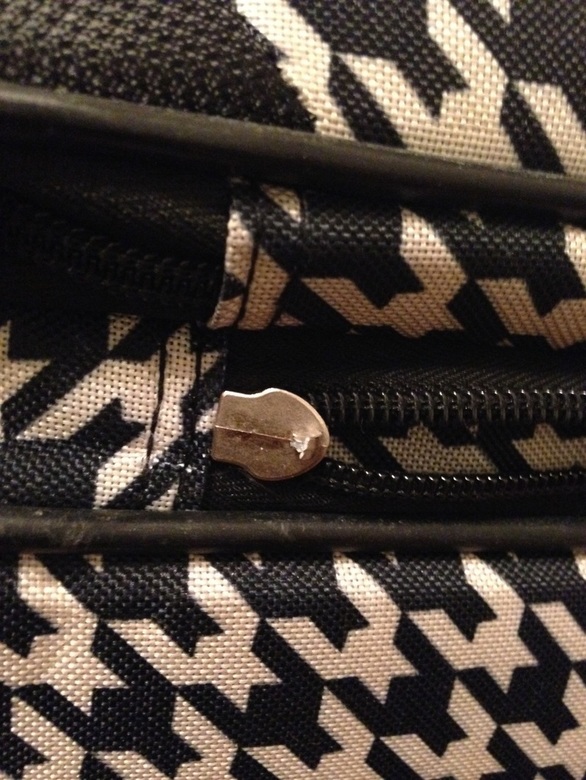|
Update: I don't know if you noticed, but originally I didn't name the airline we flew. That was on purpose. But the airline, Southwest, finally got back to Crystal and I. And I was very surprised with the response. Yes, it was in the form of a generic email. One that most people would probably get. It basically said they will not assume responsibility for the damaged bag. But it also had something else in it that surprised me. They gave us a $75 voucher to help us restore our confidence in them. It was something they didn't have to do, but did. And that impressed me.
Traveling is fun. But it can also leave you frustrated. And I would guess baggage problems (lost, damaged, delayed, broken items inside, missing items inside) are near the top of that list for many. Problem is, the airlines don’t seem to really care. According to the websites of the top airlines in the country (read: American, United, Delta, and Southwest), their baggage policies are very similar. To sum it up: the policies are heavily written in the airlines’ favor, not yours. I know. Not surprising. I found this out the hard way after one of the bags Crystal and I checked was damaged sometime while it was enroute from Chicago to Dallas. When, exactly, did it happen? We’ll probably never know. Who did it? Was it the TSA, who left a piece of paper in the bag saying they searched it? Or was it the airline? We’ll probably never know the answer to that either.
Even if we did try to file a claim, the vaguely written policies leave room for an airline to say what happened to our bag is “normal wear and tear” that (apparently) can happen when you check it.
What do the airlines consider “damaged”? For starters, many airlines say any of the following is just normal wear and tear and not damage: cuts, scratches, scuffs, dents, broken handles, straps, or wheels. If the damage was worse (or is it “wear and tear”?), you only have a certain amount of time to let the airline know. It’ll most likely be anywhere between 4 and 24 hours for domestic flights (depending on the airline), and roughly 7 days for international flights. It’s hard to wheel a suitcase if the wheels are broken. But, nothing to see here! Just normal wear and tear. Imagine if they held that same policy with their airplanes.
To me it sounds like the zipper flap to the main compartment needs to come off completely for an airline to consider it “damage.” Each airline words their damage policies slightly differently, but I have links to each policy in this post (above).
You’ll also have to deal with the airline pointing fingers at the Transportation Security Administration, and vice versa. It happened to us. When we told the TSA about the damage they said the airline was at fault. Full disclosure, at the time of this writing, we haven’t heard from the airline we flew. But their response will likely be a generic “fill out this form,” “there’s nothing we can do,” or "the TSA did it." Not all hope is lost There are several steps you can take to give yourself the best shot at winning a claim you submit:
Bottom line
Odds are against you. You likely won't even get a damn apology for your troubles. The airlines have policies that basically say nothing is their fault when it comes to this. Same goes for the TSA. But that shouldn’t stop you from trying to get some kind of monetary reimbursement from one of the parties involved. Because one thing’s for certain: if you don’t do anything, you won’t get anything. And while the airlines are sitting there pointing fingers at everyone they can think of, you’re left wondering how you were the one that ended up with your pants around your ankles. You may also be interested in: -Learn to Pack Like a Boss -Airlines Expect This Summer to be Busiest Ever -TSA Fails to ID 73 Airport Workers Linked to Terrorism
0 Comments
Leave a Reply. |
Stay inspired with The KKR in Your EmailCategories
All
|

 RSS Feed
RSS Feed